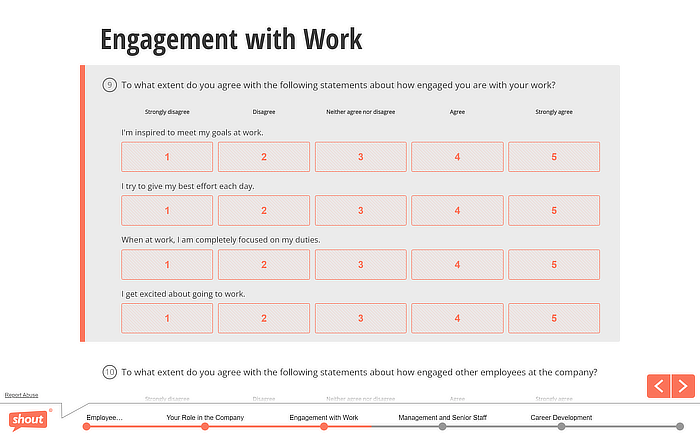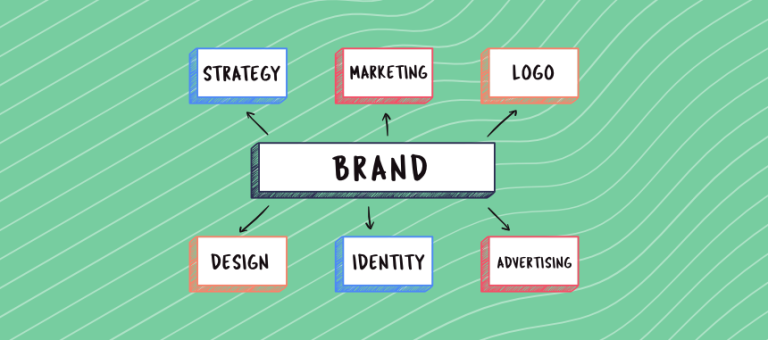Regardless of how talented and experienced your team is, there is always room for improvement in optimizing employee performance. Work overload, work-related burnout, team conflicts and toxic environments can heavily influence individual performance.
50% of workers claimed to be highly stressed out at their jobs on a daily basis. Stress is a factor that definitely impacts employee performance and doesn’t allow them to reach their full potential.
However, there are plenty of practices you can follow for overcoming these challenges. Let’s dive deeper into learning more about them.
1. Encourage your employees to take accountability
Taking ownership means being responsible for the work you do while aiming for self-development and ensuring that you are taking the organization towards success.

Whenever you motivate employees to take accountability of their work, you create an environment that allows each worker to know how much their actions and decisions impact the organization.
If you want each of your workers to hold accountability for their actions, you need to follow these steps:
- Use the SMART approach for your employees goals. This allows them to set their goals by being Specific, Measurable, Achievable, Relevant, and Time-bound.
- Conduct one-on-one meetings to address all professional challenges of your team. Allow your team members to learn new skills that align with their goals and interests. This not only improves the bond between your team and the organization, but gives them a motivational boost.
- Avoid micromanaging your team, especially your remote workforce. Keep in mind that tracking your team’s performance is important. Use tools that allow your team to track their most productive work hours, so they know when their peak performance is reached. Consider implementing an employee performance tracker to maintain visibility into your team’s progress without resorting to micromanagement. Such a tool can empower remote workers to self-monitor their productivity trends, fostering autonomy and efficiency within the team.
Especially if your team is working remotely, it’s important to never stress them out and let them do their own thing.
2. Create an employee handbook
An Employee Handbook is a document that specifies all procedures and policies your business withholds. This document in a short overview that defines your organization’s culture. It’s important that you include all of the important information in one place.
Sometimes, it may seem challenging to prepare one document that talks about your organization’s culture and the working conditions. You can use employee handbook templates to help you save time, without needing to start from scratch.
The key elements of an employee handbook include:
- The company’s culture and value: Make sure that the mission, vision, and values of your business are aligning with the employees work ethic.
- Legal Policy Framework: Address internal policies and legal requirements, ensuring that you remain compliant and employees have a clear understanding of workplace norms.
- Work-life balance strategies: Show employees holiday schedules, leave policies, their work hours, and how your organization supports a work-life balance.
- Development opportunities: Highlight training, performance reviews, and encourage career progression and growth.
Employee handbooks are great for creating a fair and consistent working environment for all employees, protecting legal interests of businesses simultaneously.
3. Foster knowledge sharing and collaboration
Team collaboration and knowledge sharing are powerful tools that an organization can use to foster growth and unlock employee potential in the long-term.
This involves incorporating professional insights, experiences, and expertise to team members for building a collaborative work culture.
Not only does this strengthen relationships between teams, but also improves team engagement. Moreover, here are a few tactics you can use for promoting collaboration and knowledge sharing within your team:
- Encourage meetings with your employees, where they can share insights on new ideas they may have or best practices.
- Promote an open communication culture that creates a safe space for your teammates to share ideas and express their personal opinions with senior managers. This might motivate the team to excel in performance.
- Encourage knowledge-sharing and collaboration practices for your company’s work policies. This promotes a collaborative work culture.
- Encourage teamwork from different departments to share expertise with one another. Cross-functional team environments promote skill and knowledge sharing.
Strengthening relationships between team members is important. Therefore, knowledge sharing and collaboration between departments is the way to do so.
4. Set up rewards programs
Rewarding your employees for a job well done has a long-lasting impact. Statistics show that employee performance and engagement rates are 14% higher in organizations with recognition programs than those without them.

Nevertheless, it can reduce employee turnover rates and accelerate revenue generation in the long-term. Even if you were to casually work at a job, you wouldn’t be too happy if the organization was showing a lack of appreciation for your hard work.
Therefore, it’s important to reward employees and make them feel valued about everything they are doing. In short, it’s important to consider the following:
- Meet together to celebrate individual milestones with each team member.
- Give out shout outs via email for employee efforts.
- Provide bonuses that may include promotions, monetary benefits, or something else your organization can offer.
Every reward doesn’t have to be monetary. Showing appreciation is more than anything and can significantly influence how employees feel.
You want your team members to give their best, and this can never happen when you are constantly on their head.
5. Perform employee performance reviews
Giving out performance reviews might just be another effective way for your team to exceed expectations. Whenever you give constant feedback on what employees can improve, this motivates them to do better.
Statistics show that 94% of organizations claim that their review process needs work.
It’s always important to have a clear roadmap of accomplishing your goals. The outcome will always be a good one and make sure that it improves employee trust, morale, and performance.
Moreover, here are a few important tips you can follow:
- Decide performance review frequencies and schedule meetings based on each employees specific agendas
- Collect feedback from seniors in the team regarding employee performance, milestones reached or that need to be achieved, and all weak areas that need improvement.
- Make sure that all team members are present in the meeting for guiding teammates on work-related technicalities, challenges, and more. During performance reviews, you can also encourage team members to learn new skills on work based on the feedback they need.
There are plenty of performance review tools you can use and most of them allow you track employee progress and conduct frequent reviews.
Moreover, you can create personalized review templates for each employee based on their assigned roles, responsibilities, department, and more.
6. Implement flexible working schedules
Time zone differences can actually affect real-time collaboration and communication. Employers can always implement a flexible working schedule.
Especially if you are working remotely, this is highly required. In fact, the latest statistics show that nearly 30% of the workforce is remaining remote.

Managers can use different communication and collaboration tools for allowing interactions and make sure that employees from different time zones have equal opportunities for contributing towards the same goals.
The world is becoming remote, and most of the jobs that require you to be present are also implementing flexible working schedules.
7. Promote fairness and equality
If there’s one thing you want to promote in your organization, it’s that everyone should respect different cultural contexts. It’s great to establish transparent performance assessment criteria that apply to all regions.
There should be no biased opinions in performance evaluation. Especially if your team is international, this is something you should pay more attention to.
Not treating everyone the same can result in long-term effects and significantly demotivate the team’s performance levels.
8. Be open to feedback
Collecting feedback from employees is important for unlocking full employee potential, especially if actionable advice is provided. Here are some points to pain attention to when it comes to receiving criticism:

- Remain flexible and avoid staying defensive. Conduct employee feedback surveys to learn more about what your team needs in case they can’t say it directly.
- Request clarifications. Asking clarifying questions is always important in case you have any doubts and concerns on how you can make something better.
- Pay close attention to actions, and not words. The most concerning part should be the way someone behaves during working hours.
- After you receive feedback, the best thing you can do is to take action instantly.
Feedback is important if you want your organization to go a step further. What’s essential is to take action instantly once you receive the feedback.
This is the only way to show your team that you care and that you’re there for them when needed.
9. Have an employee-centric approach
Putting your employees at the center of your performance management is another excellent practice you can encourage.
It involves recognizing individual strengths, acknowledging growth potential, and providing development opportunities.
Treating your employees as valuable assets and empowering them to do better is what cultivates a great working culture, promotes a high engagement level, and brings innovation to your organization.
About the author
Tony Ademi is a freelance SEO content and copywriter. For roughly four years, Tony has managed to write more than 500 SEO-optimized articles and most of them have ranked #1 on Google. When writing, Tony’s main focus is to carefully do research and make sure that his content is high-quality.




